PE-22-28 10mg
PE-22-28 10mg
PE-22-28, a synthetic spadin derivative, offers antidepressant effects by inhibiting the TREK-1 channel, promoting neurogenesis and neuroplasticity, enhancing cognitive functions, and aiding stroke recovery by increasing serotonin transmission and supporting neuronal health (PMID: 28955242).
PE-22-28 Research Topics:
-
Antidepressant Effects:
PE-22-28 acts as a potent antidepressant by inhibiting the TREK-1 channel, which is associated with depressive states. This inhibition enhances serotonin transmission, which is crucial for mood regulation and depression treatment. Studies in animal models have shown that PE-22-28 can rapidly induce antidepressant effects similar to traditional SSRIs but with potentially fewer side effects. (PMID: 28955242)
-
Neurogenesis and Neuroplasticity:
PE-22-28 significantly promotes neurogenesis (the growth of new neurons) and synaptogenesis (the formation of synapses) in the hippocampus, a region of the brain critical for memory and learning. It increases the expression of markers like BDNF, PSD-95, and synapsin, which are essential for neuronal health and plasticity. (PMID: 28955242)
-
Nootropic Properties:
Due to its effects on neurogenesis and synaptogenesis, PE-22-28 may enhance cognitive functions such as learning and memory. This makes it a potential candidate for treating neurodegenerative diseases and improving cognitive performance in healthy individuals. (PMID: 28955242)
-
Stroke Recovery:
PE-22-28 has shown potential in aiding recovery from stroke-induced depression by mitigating the upregulation of TREK-1 channels, which are implicated in post-stroke depressive states. It promotes faster and more effective recovery compared to traditional treatments. (PMID: 28955242)
Structures
Spadin Sequence: YAPLPRWSGPIGVSWGLR
Molecular Formula: C96H142N26O22
Molecular Weight: 2012.3492 g/mol
PE-22-28 Sequence: GVSWGLR
Molecular Formula: C35H55N11O9
Molecular Weight: 773.8947 g/mol
PE-22-28 Research What Is TREK-1?
The receptor that spadin and thus PE-22-28 primarily bind to is TREK-1. TREK-1 is a two-pore potassium channel regulated by a number of different molecules. It belongs to a large family of two-pore potassium channels that are important in regulating the excitability of neurons. TREK-1, in particular, is found in regions of the brain controlling mood, memory, and learning. These areas include the prefrontal cortex, the amygdala, and the hippocampus. Stimulating TREK-1 activity reduces the excitability of the neuron while reducing TREK-1 function increases excitability and increases the likelihood of a depolarization event [3]. By reducing the excitability of the neuron, TREK-1 can help to protect against excitotoxicity.PE-22-28
Depression
Research in mouse models of depression indicates that PE-22-28 is more effective in reversing the symptoms of depression than any currently used treatment and that it does so with fewer side effects. PE-22-28 has been shown to relieve depression in just 4 days without producing any side effects on other functions that are controlled by the TREK-1 channel.
There is strong evidence to show that the hippocampus is smaller (of reduced volume) in patients suffering from depressive disorder and other affect disorders. Additionally, research has shown that long-term administration of classic antidepressants (5-HT or norepinephrine selective reuptake inhibitors) boosts neurogenesis in the adult rodent hippocampus and leads to increased hippocampus volume [4]. The ability of PE-22-28 to reverse this loss of volume by stimulating neurogenesis indicates that it is fighting depression at its source and that it may help uncover some of the underlying physiologic pathways that are deficient in the setting of depression [5].
The lack of side effects caused by spadin and PE-22-28 is just as important as the effects of these peptides. Current treatments for depression have a host of known side effects ranging from suicidality to changes in libido and problems with cognition. In fact, side effects are the number one reason that people stop using their antidepressants and are reluctant to return to them even after their depression worsens. Even ketamine, which has been newly touted as a potential rapid-onset treatment for depression has a host of side effects including delirium, hallucinations, muscle tremors, high blood pressure, and increased heart rate. So, despite its rapid onset of action, doctors have been reluctant to use ketamine in the treatment of depression because of the range and severity of its side effects [6].
There was initial concern that spadin would also cause a host of side effects because the TREK-1 receptor has been implicated in pain sensitivity, seizure activity, and cardiac ischemia. There was also concern that spadin and PE-22-28 may inhibit currents in TREK-2, TRAAK, TASK, and TRESK channels leading to additional side effects. Research in mice, however, shows that none of these side effects are observed and PE-22-28 has one of the smallest side effect profiles of any existing or experimental treatment for depression [7].
Post-Stroke Depression
Post-stroke depression (PSD) is a common condition following brain ischemia and is particularly refractory to standard treatment. Recent research has shown that TREK-1 over-expression likely plays a causative role in this condition. In experimental mouse models, this upregulation can be suppressed or reversed using both SSRI antidepressants as well as TREK-1 blockers like spadin [3]. Of course, SSRIs take much longer to act and have a host of side effects. This suggests that PE-22-28 may prove effective in future trials exploring the treatment of PSD.
Neurogenesis
The ability of antidepressant drugs to upregulate neurogenesis in the hippocampus has been well established. Research with PE-22-28 shows that this peptide can perform the same function but in a shorter duration of time. Studies in mice show that PE-22-28 increases both neurogenesis and synaptogenesis after just four days. Preliminary results indicate that PE-22-28 roughly doubles the amount of BrdU (an exogenous marker that is incorporated into DNA and used to detect replication) positive cells in the hippocampus. In the case of synaptogenesis, PE-22-28 appears to double the rate of synapse formation [2], [8].
Another clue that PE-22-28 boosts cell division in the brain is the increase in CREB, seen after its administration. CREB (cAMP response element-binding protein) is a transcription factor associated with neuronal plasticity, memory formation, and the development of spatial memory. CREB appears to be a necessary component in not just the growth of neurons, but in their protection as well. Research in Alzheimer’s disease has shown a down-regulation of CREB and scientists have long sought a drug capable of boosting CREB as a means of treating Alzheimer’s [9], [10]. PE-22-28 is being actively investigated for its ability to both prevent and reverse the symptoms of Alzheimer’s disease.
The hippocampus, while playing an important role in depression, is also a critical structure for learning and memory. It is a very plastic structure that research has revealed to be vulnerable to damage by a variety of insults. The hippocampus has been implicated in diseases ranging from depression to anxiety to Alzheimer’s disease. Improving its ability to regenerate following injury could help to treat number of diseases. Notably, the role of the hippocampus in learning, memory, and spatial navigation suggests that PE-22-28 or a similar TREK-1 antagonist may prove to be an effective nootropic.
Now, it has generally been demonstrated in animal models that removing the TREK-1 channel is a recipe for disaster. In previous mouse models, knockout of TREK-1 increased the likelihood of seizure activity and reduced the normal ability of this two-pore potassium channel to protect neurons from excitotoxicity. It came as a bit of surprise then that neither spadin nor PE-2228 enhanced seizure activity. Even more interesting is the fact that mice treated with spadin are more resistant to developing generalized seizures [3]. PE-22-28 has even more profound protective effects than spadin.
Top: Number of cells in the hippocampus of mice treated with saline, fluoxetine (Prozac), and spadin for four days.
Middle: Quantification of CREB activity in the brain of mice treated with saline and spadin.
Bottom: Effect of spadin on the firing rate of 5-HT neurons (neurons implicated in depression) at baseline (WT), in TREK-1 knockout mice (KO), and after administration of spadin and saline. Note that spadin boosts firing in neurons almost as much as removing TREK-1 entirely.
Source: OCL – Oilseeds and fats, Crops and Lipid
Muscle Function
Some research suggests that TREK-1 plays an important role in the ability of muscles to respond to mechanical stimulation. In particular, TREK-1 blockade appears to increase contractility in muscle tissue while activation of the channel appears to promote muscle relaxation. While this particular aspect of the TREK-1 channel is still in the early stages of investigation, it is becoming increasingly important. There is hope that understanding the role of molecules like PE-22-28 in muscle contraction and relaxation may not only provide new treatment modalities for conditions like myogenic bladder dysfunction but may also open up new pathways for understanding the physiology of muscle performance [11].
Summary
According to Dr. Jean Mazella, one of the lead researchers in the development of PE-22-28, the peptide was specifically designed to move forward the use of spadin analogs in clinics. PE-22-28 appears to be an effective treatment for depression and a potent stimulator of neurogenesis and synaptogenesis in the hippocampus. It has far fewer side effects than existing antidepressant medications and appears to retain much of its ability to antagonize TREK-1 even after modifications that boost half-life or alter the route of administration. In short, PE-22-28 appears to offer a strong target for guiding the development of a new generation of antidepressants and is helping to shed light on the burgeoning field of nootropics. It is also helping to expand the arsenal of drugs used to treat neurodegenerative diseases like Alzheimer’s disease.
Article Author
The above literature was researched, edited and organized by Dr. E. Logan, M.D. Dr. E. Logan holds a doctorate from Case Western Reserve University School of Medicine and a B.S. in molecular biology.
Scientific Journal Author
Dr. Jean Mazella obtained his PhD in 1984 from the University of Nice, France, and fulfilled the role of Assistant Professor at the Montreal Neurological Institute, Canada, from 1994-95. He is currently leading the ‘Cellular Biology of Neuropeptides and Associated Pathologies’ project at the Institute of Molecular and Cellular Pharmacology (IPMC) in France and is Coordinator for ANR’s ENCOD (2012-14) and MEDINCOD (2014-17) programs. His pioneering research about Spadins and the subsequent analog PE-22-28 seems to partly originate from him investigating the Sortilin/neurotensin receptor-3 system that, once knocked out, exhibited similar effects to Spadin and PE-22-28 peptides like reduced fibrosis and higher 5-HT firing rate.
Dr. Jean Mazella is being referenced as one of the leading scientists involved in the research and development of PE-22-28. In no way is this doctor/scientist endorsing or advocating the purchase, sale, or use of this product for any reason. There is no affiliation or relationship, implied or otherwise, between Life Link Research and this doctor. The purpose of citing the doctor is to acknowledge, recognize, and credit the exhaustive research and development efforts conducted by the scientists studying this peptide. Dr. Jean Mazella is listed in [1] under the referenced citations.
Referenced Citations
-
-
-
- Mazella et al., “Spadin, a sortilin-derived peptide, targeting rodent TREK-1 channels: a new concept in the antidepressant drug design,” PLoS Biol., vol. 8, no. 4, p. e1000355, Apr. 2010, doi:10.1371/journal.pbio.1000355.
- A. Djillani, M. Pietri, S. Moreno, C. Heurteaux, J. Mazella, and M. Borsotto, “Shortened Spadin Analogs Display Better TREK-1 Inhibition, In Vivo Stability and Antidepressant Activity,” Front. Pharmacol., vol. 8, Sep. 2017, doi: 10.3389/fphar.2017.00643.
- A. Djillani, J. Mazella, C. Heurteaux, and M. Borsotto, “Role of TREK-1 in Health and Disease, Focus on the Central Nervous System,” Front. Pharmacol., vol. 10, Apr. 2019, doi:10.3389/fphar.2019.00379.
- R. S. Duman, S. Nakagawa, and J. Malberg, “Regulation of adult neurogenesis by antidepressant treatment,” Neuropsychopharmacol. Off. Publ. Am. Coll. Neuropsychopharmacol., vol. 25, no. 6,PE-22-pp. 836–844, Dec. 2001, doi: 10.1016/S0893-133X(01)00358-X.
- J. E. Malberg and L. E. Schechter, “Increasing hippocampal neurogenesis: a novel mechanism for antidepressant drugs,” Curr. Pharm. Des., vol. 11, no. 2, pp. 145–155, 2005, doi:10.2174/1381612053382223.
- N. Katalinic, R. Lai, A. Somogyi, P. B. Mitchell, P. Glue, and C. K. Loo, “Ketamine as a new treatment for depression: a review of its efficacy and adverse effects,” Aust. N. Z. J. Psychiatry, vol. 47, no. 8, pp. 710–727, Aug. 2013, doi: 10.1177/0004867413486842.
- H. Moha Ou Maati et al., “Spadin as a new antidepressant: absence of TREK-1-related side effects,” Neuropharmacology, vol. 62, no. 1, pp. 278–288, Jan. 2012, doi:10.1016/j.neuropharm.2011.07.019.
- C. Devader et al., “In vitro and in vivo regulation of synaptogenesis by the novel antidepressant spadin,” Br. J. Pharmacol., vol. 172, no. 10, pp. 2604–2617, May 2015, doi: 10.1111/bph.13083
- A. J. Silva, J. H. Kogan, P. W. Frankland, and S. Kida, “CREB and memory,” Annu. Rev. Neurosci., vol. 21, pp. 127–148, 1998, doi: 10.1146/annurev.neuro.21.1.127.
- T. C. of B. Limited, “Mental health: spadin, a fast-acting antidepressant,” Dis. Model. Mech., vol. 3, no. 7–8, pp. 398–398, Jul. 2010.
- Lei, X.-Q. Pan, S. Chang, S. B. Malkowicz, T. J. Guzzo, and A. P. Malykhina, “Response of the human detrusor to stretch is regulated by TREK-1, a two-pore-domain (K2P) mechano-gated potassium channel,” J. Physiol., vol. 592, no. 14, pp. 3013–3030, Jul. 2014, doi:10.1113/jphysiol.2014.271718.
-
-
$72.00
Description
PE-22-28, a synthetic spadin derivative, offers antidepressant effects by inhibiting the TREK-1 channel, promoting neurogenesis and neuroplasticity, enhancing cognitive functions, and aiding stroke recovery by increasing serotonin transmission and supporting neuronal health (PMID: 28955242).
PE-22-28 Research Topics:
-
Antidepressant Effects:
PE-22-28 acts as a potent antidepressant by inhibiting the TREK-1 channel, which is associated with depressive states. This inhibition enhances serotonin transmission, which is crucial for mood regulation and depression treatment. Studies in animal models have shown that PE-22-28 can rapidly induce antidepressant effects similar to traditional SSRIs but with potentially fewer side effects. (PMID: 28955242)
-
Neurogenesis and Neuroplasticity:
PE-22-28 significantly promotes neurogenesis (the growth of new neurons) and synaptogenesis (the formation of synapses) in the hippocampus, a region of the brain critical for memory and learning. It increases the expression of markers like BDNF, PSD-95, and synapsin, which are essential for neuronal health and plasticity. (PMID: 28955242)
-
Nootropic Properties:
Due to its effects on neurogenesis and synaptogenesis, PE-22-28 may enhance cognitive functions such as learning and memory. This makes it a potential candidate for treating neurodegenerative diseases and improving cognitive performance in healthy individuals. (PMID: 28955242)
-
Stroke Recovery:
PE-22-28 has shown potential in aiding recovery from stroke-induced depression by mitigating the upregulation of TREK-1 channels, which are implicated in post-stroke depressive states. It promotes faster and more effective recovery compared to traditional treatments. (PMID: 28955242)
Structures
Spadin Sequence: YAPLPRWSGPIGVSWGLR
Molecular Formula: C96H142N26O22
Molecular Weight: 2012.3492 g/mol
PE-22-28 Sequence: GVSWGLR
Molecular Formula: C35H55N11O9
Molecular Weight: 773.8947 g/mol
PE-22-28 Research What Is TREK-1?
The receptor that spadin and thus PE-22-28 primarily bind to is TREK-1. TREK-1 is a two-pore potassium channel regulated by a number of different molecules. It belongs to a large family of two-pore potassium channels that are important in regulating the excitability of neurons. TREK-1, in particular, is found in regions of the brain controlling mood, memory, and learning. These areas include the prefrontal cortex, the amygdala, and the hippocampus. Stimulating TREK-1 activity reduces the excitability of the neuron while reducing TREK-1 function increases excitability and increases the likelihood of a depolarization event [3]. By reducing the excitability of the neuron, TREK-1 can help to protect against excitotoxicity.PE-22-28
Depression
Research in mouse models of depression indicates that PE-22-28 is more effective in reversing the symptoms of depression than any currently used treatment and that it does so with fewer side effects. PE-22-28 has been shown to relieve depression in just 4 days without producing any side effects on other functions that are controlled by the TREK-1 channel.
There is strong evidence to show that the hippocampus is smaller (of reduced volume) in patients suffering from depressive disorder and other affect disorders. Additionally, research has shown that long-term administration of classic antidepressants (5-HT or norepinephrine selective reuptake inhibitors) boosts neurogenesis in the adult rodent hippocampus and leads to increased hippocampus volume [4]. The ability of PE-22-28 to reverse this loss of volume by stimulating neurogenesis indicates that it is fighting depression at its source and that it may help uncover some of the underlying physiologic pathways that are deficient in the setting of depression [5].
The lack of side effects caused by spadin and PE-22-28 is just as important as the effects of these peptides. Current treatments for depression have a host of known side effects ranging from suicidality to changes in libido and problems with cognition. In fact, side effects are the number one reason that people stop using their antidepressants and are reluctant to return to them even after their depression worsens. Even ketamine, which has been newly touted as a potential rapid-onset treatment for depression has a host of side effects including delirium, hallucinations, muscle tremors, high blood pressure, and increased heart rate. So, despite its rapid onset of action, doctors have been reluctant to use ketamine in the treatment of depression because of the range and severity of its side effects [6].
There was initial concern that spadin would also cause a host of side effects because the TREK-1 receptor has been implicated in pain sensitivity, seizure activity, and cardiac ischemia. There was also concern that spadin and PE-22-28 may inhibit currents in TREK-2, TRAAK, TASK, and TRESK channels leading to additional side effects. Research in mice, however, shows that none of these side effects are observed and PE-22-28 has one of the smallest side effect profiles of any existing or experimental treatment for depression [7].
Post-Stroke Depression
Post-stroke depression (PSD) is a common condition following brain ischemia and is particularly refractory to standard treatment. Recent research has shown that TREK-1 over-expression likely plays a causative role in this condition. In experimental mouse models, this upregulation can be suppressed or reversed using both SSRI antidepressants as well as TREK-1 blockers like spadin [3]. Of course, SSRIs take much longer to act and have a host of side effects. This suggests that PE-22-28 may prove effective in future trials exploring the treatment of PSD.
Neurogenesis
The ability of antidepressant drugs to upregulate neurogenesis in the hippocampus has been well established. Research with PE-22-28 shows that this peptide can perform the same function but in a shorter duration of time. Studies in mice show that PE-22-28 increases both neurogenesis and synaptogenesis after just four days. Preliminary results indicate that PE-22-28 roughly doubles the amount of BrdU (an exogenous marker that is incorporated into DNA and used to detect replication) positive cells in the hippocampus. In the case of synaptogenesis, PE-22-28 appears to double the rate of synapse formation [2], [8].
Another clue that PE-22-28 boosts cell division in the brain is the increase in CREB, seen after its administration. CREB (cAMP response element-binding protein) is a transcription factor associated with neuronal plasticity, memory formation, and the development of spatial memory. CREB appears to be a necessary component in not just the growth of neurons, but in their protection as well. Research in Alzheimer’s disease has shown a down-regulation of CREB and scientists have long sought a drug capable of boosting CREB as a means of treating Alzheimer’s [9], [10]. PE-22-28 is being actively investigated for its ability to both prevent and reverse the symptoms of Alzheimer’s disease.
The hippocampus, while playing an important role in depression, is also a critical structure for learning and memory. It is a very plastic structure that research has revealed to be vulnerable to damage by a variety of insults. The hippocampus has been implicated in diseases ranging from depression to anxiety to Alzheimer’s disease. Improving its ability to regenerate following injury could help to treat number of diseases. Notably, the role of the hippocampus in learning, memory, and spatial navigation suggests that PE-22-28 or a similar TREK-1 antagonist may prove to be an effective nootropic.
Now, it has generally been demonstrated in animal models that removing the TREK-1 channel is a recipe for disaster. In previous mouse models, knockout of TREK-1 increased the likelihood of seizure activity and reduced the normal ability of this two-pore potassium channel to protect neurons from excitotoxicity. It came as a bit of surprise then that neither spadin nor PE-2228 enhanced seizure activity. Even more interesting is the fact that mice treated with spadin are more resistant to developing generalized seizures [3]. PE-22-28 has even more profound protective effects than spadin.
Top: Number of cells in the hippocampus of mice treated with saline, fluoxetine (Prozac), and spadin for four days.
Middle: Quantification of CREB activity in the brain of mice treated with saline and spadin.
Bottom: Effect of spadin on the firing rate of 5-HT neurons (neurons implicated in depression) at baseline (WT), in TREK-1 knockout mice (KO), and after administration of spadin and saline. Note that spadin boosts firing in neurons almost as much as removing TREK-1 entirely.
Source: OCL – Oilseeds and fats, Crops and Lipid
Muscle Function
Some research suggests that TREK-1 plays an important role in the ability of muscles to respond to mechanical stimulation. In particular, TREK-1 blockade appears to increase contractility in muscle tissue while activation of the channel appears to promote muscle relaxation. While this particular aspect of the TREK-1 channel is still in the early stages of investigation, it is becoming increasingly important. There is hope that understanding the role of molecules like PE-22-28 in muscle contraction and relaxation may not only provide new treatment modalities for conditions like myogenic bladder dysfunction but may also open up new pathways for understanding the physiology of muscle performance [11].
Summary
According to Dr. Jean Mazella, one of the lead researchers in the development of PE-22-28, the peptide was specifically designed to move forward the use of spadin analogs in clinics. PE-22-28 appears to be an effective treatment for depression and a potent stimulator of neurogenesis and synaptogenesis in the hippocampus. It has far fewer side effects than existing antidepressant medications and appears to retain much of its ability to antagonize TREK-1 even after modifications that boost half-life or alter the route of administration. In short, PE-22-28 appears to offer a strong target for guiding the development of a new generation of antidepressants and is helping to shed light on the burgeoning field of nootropics. It is also helping to expand the arsenal of drugs used to treat neurodegenerative diseases like Alzheimer’s disease.
Article Author
The above literature was researched, edited and organized by Dr. E. Logan, M.D. Dr. E. Logan holds a doctorate from Case Western Reserve University School of Medicine and a B.S. in molecular biology.
Scientific Journal Author
Dr. Jean Mazella obtained his PhD in 1984 from the University of Nice, France, and fulfilled the role of Assistant Professor at the Montreal Neurological Institute, Canada, from 1994-95. He is currently leading the ‘Cellular Biology of Neuropeptides and Associated Pathologies’ project at the Institute of Molecular and Cellular Pharmacology (IPMC) in France and is Coordinator for ANR’s ENCOD (2012-14) and MEDINCOD (2014-17) programs. His pioneering research about Spadins and the subsequent analog PE-22-28 seems to partly originate from him investigating the Sortilin/neurotensin receptor-3 system that, once knocked out, exhibited similar effects to Spadin and PE-22-28 peptides like reduced fibrosis and higher 5-HT firing rate.
Dr. Jean Mazella is being referenced as one of the leading scientists involved in the research and development of PE-22-28. In no way is this doctor/scientist endorsing or advocating the purchase, sale, or use of this product for any reason. There is no affiliation or relationship, implied or otherwise, between Life Link Research and this doctor. The purpose of citing the doctor is to acknowledge, recognize, and credit the exhaustive research and development efforts conducted by the scientists studying this peptide. Dr. Jean Mazella is listed in [1] under the referenced citations.
Referenced Citations
-
-
-
- Mazella et al., “Spadin, a sortilin-derived peptide, targeting rodent TREK-1 channels: a new concept in the antidepressant drug design,” PLoS Biol., vol. 8, no. 4, p. e1000355, Apr. 2010, doi:10.1371/journal.pbio.1000355.
- A. Djillani, M. Pietri, S. Moreno, C. Heurteaux, J. Mazella, and M. Borsotto, “Shortened Spadin Analogs Display Better TREK-1 Inhibition, In Vivo Stability and Antidepressant Activity,” Front. Pharmacol., vol. 8, Sep. 2017, doi: 10.3389/fphar.2017.00643.
- A. Djillani, J. Mazella, C. Heurteaux, and M. Borsotto, “Role of TREK-1 in Health and Disease, Focus on the Central Nervous System,” Front. Pharmacol., vol. 10, Apr. 2019, doi:10.3389/fphar.2019.00379.
- R. S. Duman, S. Nakagawa, and J. Malberg, “Regulation of adult neurogenesis by antidepressant treatment,” Neuropsychopharmacol. Off. Publ. Am. Coll. Neuropsychopharmacol., vol. 25, no. 6,PE-22-pp. 836–844, Dec. 2001, doi: 10.1016/S0893-133X(01)00358-X.
- J. E. Malberg and L. E. Schechter, “Increasing hippocampal neurogenesis: a novel mechanism for antidepressant drugs,” Curr. Pharm. Des., vol. 11, no. 2, pp. 145–155, 2005, doi:10.2174/1381612053382223.
- N. Katalinic, R. Lai, A. Somogyi, P. B. Mitchell, P. Glue, and C. K. Loo, “Ketamine as a new treatment for depression: a review of its efficacy and adverse effects,” Aust. N. Z. J. Psychiatry, vol. 47, no. 8, pp. 710–727, Aug. 2013, doi: 10.1177/0004867413486842.
- H. Moha Ou Maati et al., “Spadin as a new antidepressant: absence of TREK-1-related side effects,” Neuropharmacology, vol. 62, no. 1, pp. 278–288, Jan. 2012, doi:10.1016/j.neuropharm.2011.07.019.
- C. Devader et al., “In vitro and in vivo regulation of synaptogenesis by the novel antidepressant spadin,” Br. J. Pharmacol., vol. 172, no. 10, pp. 2604–2617, May 2015, doi: 10.1111/bph.13083
- A. J. Silva, J. H. Kogan, P. W. Frankland, and S. Kida, “CREB and memory,” Annu. Rev. Neurosci., vol. 21, pp. 127–148, 1998, doi: 10.1146/annurev.neuro.21.1.127.
- T. C. of B. Limited, “Mental health: spadin, a fast-acting antidepressant,” Dis. Model. Mech., vol. 3, no. 7–8, pp. 398–398, Jul. 2010.
- Lei, X.-Q. Pan, S. Chang, S. B. Malkowicz, T. J. Guzzo, and A. P. Malykhina, “Response of the human detrusor to stretch is regulated by TREK-1, a two-pore-domain (K2P) mechano-gated potassium channel,” J. Physiol., vol. 592, no. 14, pp. 3013–3030, Jul. 2014, doi:10.1113/jphysiol.2014.271718.
-
-




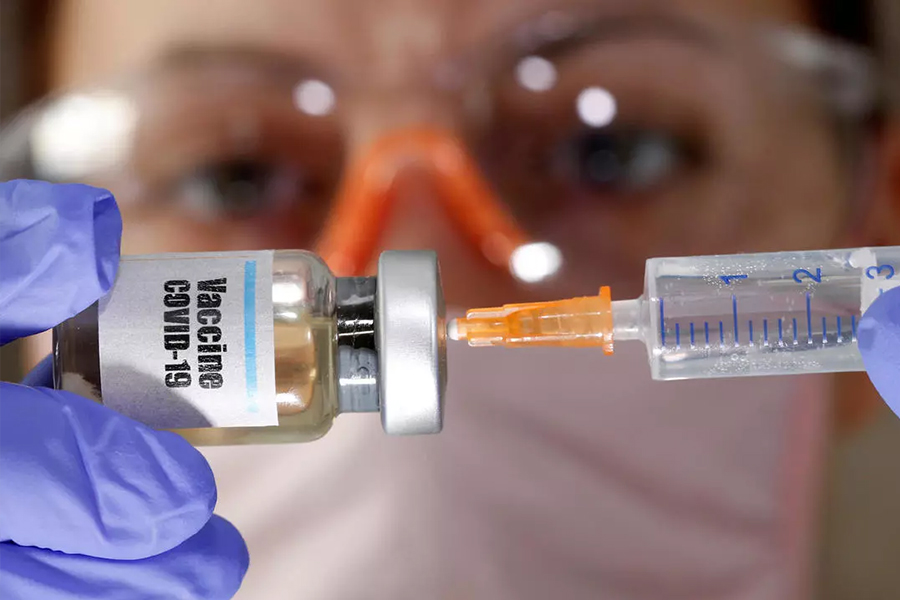

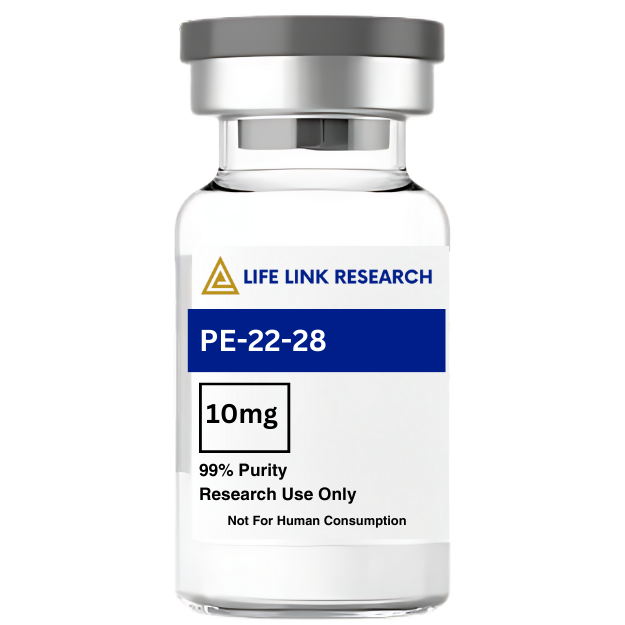
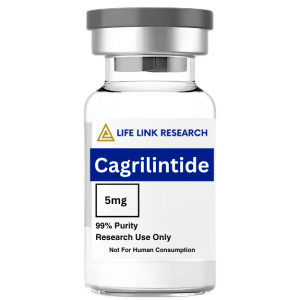
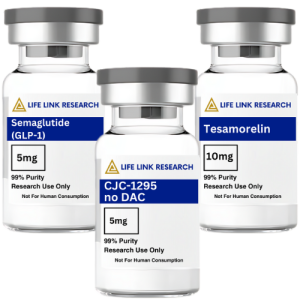
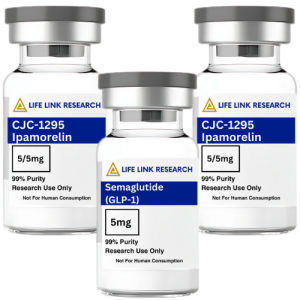
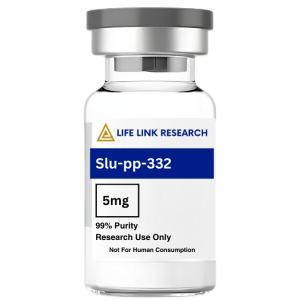
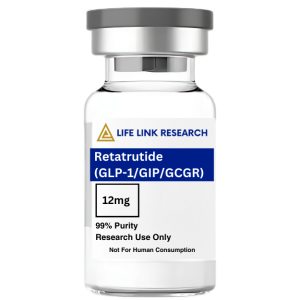
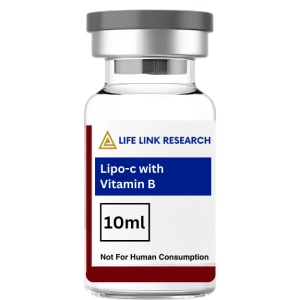


Reviews
There are no reviews yet.